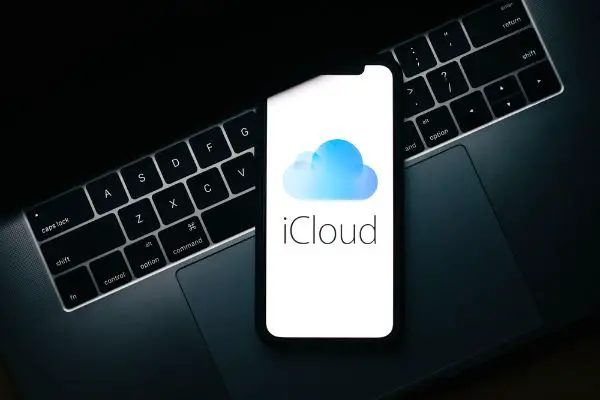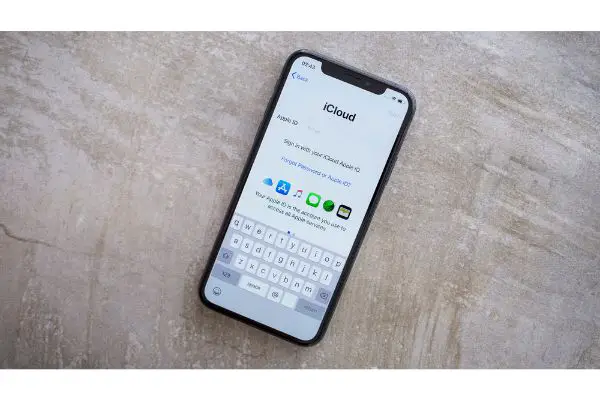Disclaimer: This post may contain affiliate links, meaning we get a small commission if you make a purchase through our links, at no cost to you. For more information, please visit our Disclaimer Page.
Apple’s iCloud is both a storage and data computing service that has millions of users worldwide. With several data centers at various points throughout the world, Apple makes it easy for users to sync important information, keep track of files, and even update shared calendars through this service.
In fact, much of whatever a person might store on their local iOS device is able to go straight to these cloud servers, essentially creating almost full backups that users can download again as needed. This added redundancy is another benefit of cloud computing services.
With all of its flexibility, consumers do need to pay for their own iCloud storage in order to be able to get the most out of it. If you have a registered Apple ID and synched device, you do have the option to use the basic iCloud storage plan for free. This would give you five gigabytes of space, but it can fill up quickly.
Many users wonder about the various payment methods that they might be able to use to purchase upgrades to their iCloud storage options. We will go through some of the most popular ones. Further, we’ll discuss some errors you might get, why you might find yourself with recurring charges, and what can happen if you decide not to pay for the service anymore.

(Attribution: ©[nikkimeel]/Depositphotos.com)
Table of Contents
Can I Purchase iCloud Storage With iTunes Gift Card?
If you decide that you want to pay for iCloud to increase your storage space, you’ll actually be upgrading to what the company calls iCloud+. There are several tiers of iCloud+, and you have a few ways that you can pay for them.
Before we get into that, we should note that not all of the features you get with the different tiers of iCloud+ may be available in all regions. However, anyone should be able to upgrade the storage space by paying for the tier they want. If you decide that you would like an upgrade, you can use your iPhone, iPad, Mac, PC or iPod Touch in order to do so.
An iTunes gift card should give you credit that is added to your iTunes account balance upon activation. Just like any credit or debit card, you can use this balance to pay for iCloud. The process is fairly automated, but it should still ask you which card you’d like to use.
There is a specific order in which Apple tries to charge your payment methods by default, but you should have the option to change this. Once you do, you can select from the balance and use it to pay for iCloud.
Note, however, that an iTunes gift card is different from an Apple Store card. With the latter, you can purchase physical hardware from any retail location. This would include things like iPhones, or you can purchase some of the accessories and peripherals you might want to use with your devices.
With an iTunes gift card, you can purchase access to all the digital content that Apple offers, including iCloud.
Can I Use Apple ID Balance To Pay for iCloud Storage?
Yes, you can use your Apple ID balance as a way to pay for iCloud. In fact, this is the default method that Apple prefers to charge first.
If there is not enough of a balance on your Apple ID in order to cover this transaction, the company will try to charge whatever your primary payment method besides your Apple ID is first.
If you don’t have one on file, you’ll need to add one, and you may be prompted to do so once you see that your payment for iCloud hasn’t gone through as intended.
There are also secondary payment methods you can add to your account, and it may be prudent to do so at this time, especially if you see that there might be a problem with using your Apple ID balance in the near future. Debit or credit cards are the different kinds of payments most people use, and you can add more than one of these as backups in case your primary sources do not work.
Further, although Apple ID is the preferred method of payment for Apple, not all products and services you buy will be charged to it by default. This includes some subscription services you might wish to pay for, gifts, gift cards, or some purchases that you might make as part of a Family Sharing group.
If you have enough of a balance on your Apple ID when making purchases as part of this group, you’ll be charged from your personal ID for those things. If you do not, the charges will fall on the designated family organizer for this group.
Why Does My iCloud Account Say It Cannot Be Used for Apple Pay?
Some users may encounter error messages when trying to set up Apple Pay. Commonly, Apple may tell them that their iCloud account is not able to be used for Apple Pay, which can present some logistical problems. Some people found success by simply logging out and then back in again. However, this solution may not work for everyone, and it doesn’t explain why this should be such a problem in the first place.
There are some plausible reasons that this might come up seem to be:
- A user is not operating on an eligible device that supports Apple Pay.
- They are not based in a region that uses Apple Pay at the time that they are trying to set up the account.
- The banking institution they use may not support Apple Pay.
- The device may be set to the wrong region by mistake.
- The iOS operating system might not be running at its most current level.
- The user may not be signed into the iCloud service.
While the reasons on the above list can be common problems a user might encounter, it also seems like this issue could be related to age limits.
In order to use Apple Pay, the account holder must be of a legal minimum age to be able to use the paid services the company offers. In most cases, this should be 16 or 18 years of age, but it could vary by region. It is possible that a parent or guardian could update the account using a parental override. However, this may not always work.
If it does not, the account holder may need to contact Apple support to get the issue resolved. Accounts created for users of particular ages seem to be barred from using their iCloud accounts for Apple Pay, and other services may be affected as well. Along with the age, however, it is important to make sure that the bank or payment method also supports Apple Pay.
Why Does iCloud Keep Charging Me?
If you are no longer using iCloud storage actively, you may find that you are still charged for it. The plans for iCloud are set on a monthly basis, and anything over the free limit is charged to your preferred payment method each month. Even if you don’t use the service, you may have files and data stored on the cloud that all add up to exceed the free storage space you can use without payment.
If so, you’ll still get charged through one of your payment methods. The only way to stop this is to downgrade the service tier manually. In order to do this, you may need to agree to certain terms, or you might have to go into the cloud to decide what content you want to delete in order to get under the free limit of storage space.
How Do I Stop Getting Charged for iCloud Storage?
You can downgrade or cancel your plan in order to stop being charged for iCloud storage. There are a few devices from which you can do this, and the process should be mostly similar across all of them. In general, here are the steps that you should follow:
- Go to the ‘Settings’ section on your device.
- Click on your account name at the top.
- From here, find the iCloud heading and click on it.
- You’ll see a storage bar, and you can click on ‘Manage Storage’ just underneath it.
- Go to the part where you can change your storage plan.
- You can either downgrade it to a cheaper tier with less storage and features, or you can select the free option.
- Going back to the free option essentially cancels your paid plan, and you won’t be charged again.

(Attribution: ©[CDPIC]/Depositphotos.com)
What Happens if You Stop Paying for iCloud Storage?
If you prefer to stop paying altogether, you’ll lose most of the extra services that come with paid plans. You’ll also have less storage space to keep your files. Beyond that, nothing much should happen, but you may encounter a problem if you still have a lot of stuff left in storage.
Here, iCloud may stop working entirely until you address the storage you’re using. Since you’re no longer paying for it, you may need to delete a lot of content in order to get the service running again.
Conclusion
iCloud has several service options that come at relatively affordable monthly prices. Each one offers more storage space and some extra features you might like. However, you might encounter some issues with different payment methods, or you may be blocked from using specific ones. You could also get recurring charges, but there are ways to cancel the service if you downgrade your storage space.
